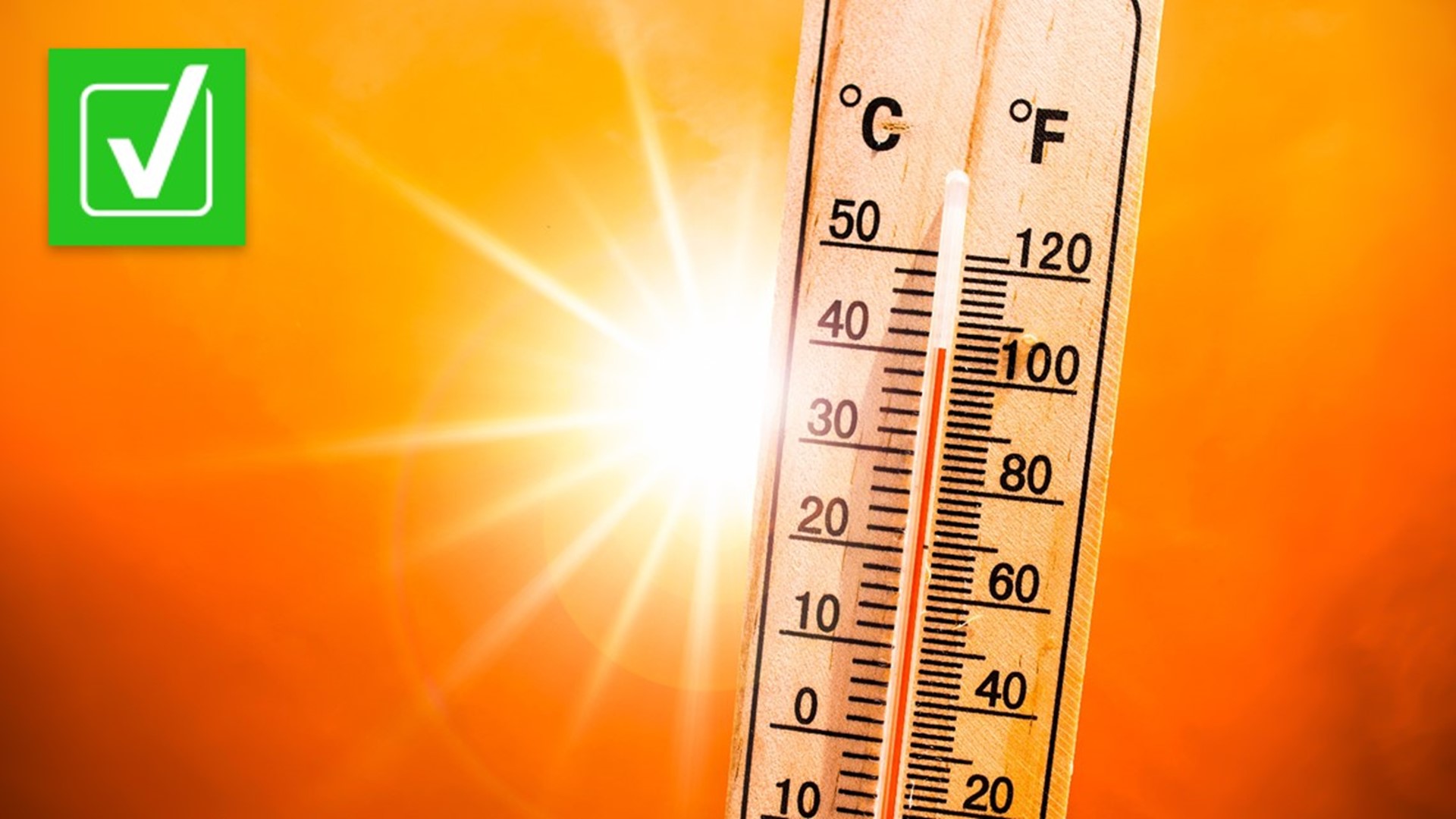Editor's note: The video version of this story is from June 2021.
As the first day of summer soon approaches, millions of Americans are being warned to stay indoors, if possible, as a heat wave settles over states stretching through parts of the Gulf Coast to the Great Lakes and east to the Carolinas. On June 13, the National Weather Service Prediction Center said 107.5 million people will be affected by a combination of heat advisories, excessive heat warnings, and excessive heat watches this week.
As the heat intensifies across many parts of the country, the Atlanta-Fulton County Emergency Management Agency tweeted, in part, “Heat is the leading weather-related killer.” Others online have made similar claims.
THE QUESTION
Is heat the leading weather-related killer in the U.S.?
THE SOURCES
- Centers for Disease Control and Prevention (CDC)
- Ready, public service campaign for the Federal Emergency Management Agency (FEMA)
- National Weather Service (NWS)
THE ANSWER
Yes, historically, heat has led to the most weather-related deaths in the U.S.
WHAT WE FOUND
The CDC tracks heat-related deaths in the United States and says around 618 people are killed by extreme heat annually. It defines extreme heat as: “Summertime temperatures that are much hotter and/or humid than average. Because some places are hotter than others, this depends on what’s considered average for a particular location at that time of year.”
The number of heat-related deaths was even higher for a 15-year span from 2004-2018, according to a CDC morbidity and mortality report. During that time, there was an average of 702 heat-related deaths in the U.S. every year. In 59% of those deaths, heat was identified as the underlying cause of death and in 41% of those deaths, heat was identified as a contributing cause of death.
The CDC says floods are the second-deadliest weather-related hazard in the U.S., accounting for about 98 deaths per year. Most of those deaths are due to drowning.
Ready, the Federal Emergency Management Agency’s (FEMA) national public service campaign, says, “extreme heat is responsible for the highest number of annual deaths among all weather-related hazards.”
The National Weather Service (NWS) also tracks weather-related fatalities, although the agency notes the CDC is the official government source for weather-related causes of death. According to NWS data, heat has been the leading cause of death among weather-related fatalities over the past 30 years.
Over the last 10 years, heat, floods, and tornadoes have been the top weather-related killers in the U.S., according to NWS. In 2020, tornadoes led to the most weather-related deaths, NWS data shows.
The CDC expects more extreme heat events in the coming years due to climate change.
“Extreme heat events in the United States are already occurring and expected to become more common, more severe, and longer-lasting as our climate changes,” the agency says.
People most at risk to suffer a heat-related illness or death are older adults, young children, people with mental illness, and people with chronic diseases, according to the CDC. Although less likely, young and healthy people can still be affected.
The federal agency urges people to be aware of warning signs of heat stroke and heat exhaustion, such as a high body temperature, dizziness, and nausea.
To stay cool, people should drink cold beverages, rest, take a cold shower or bath, seek a place with air conditioning, and wear lightweight clothing.
The Associated Press contributed to this report.
More from VERIFY: No, a heat wave didn’t cause a wind turbine to melt in Texas












